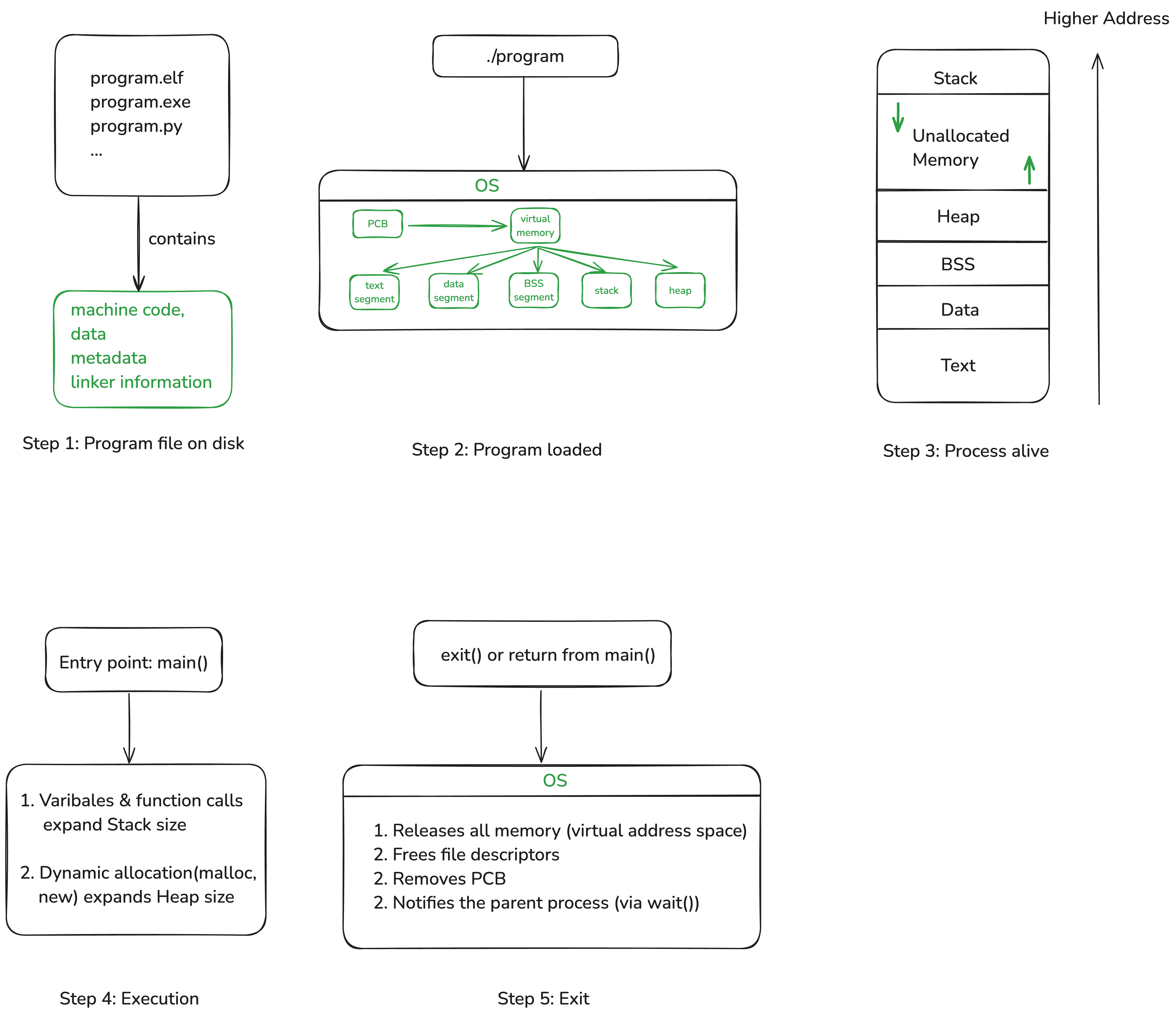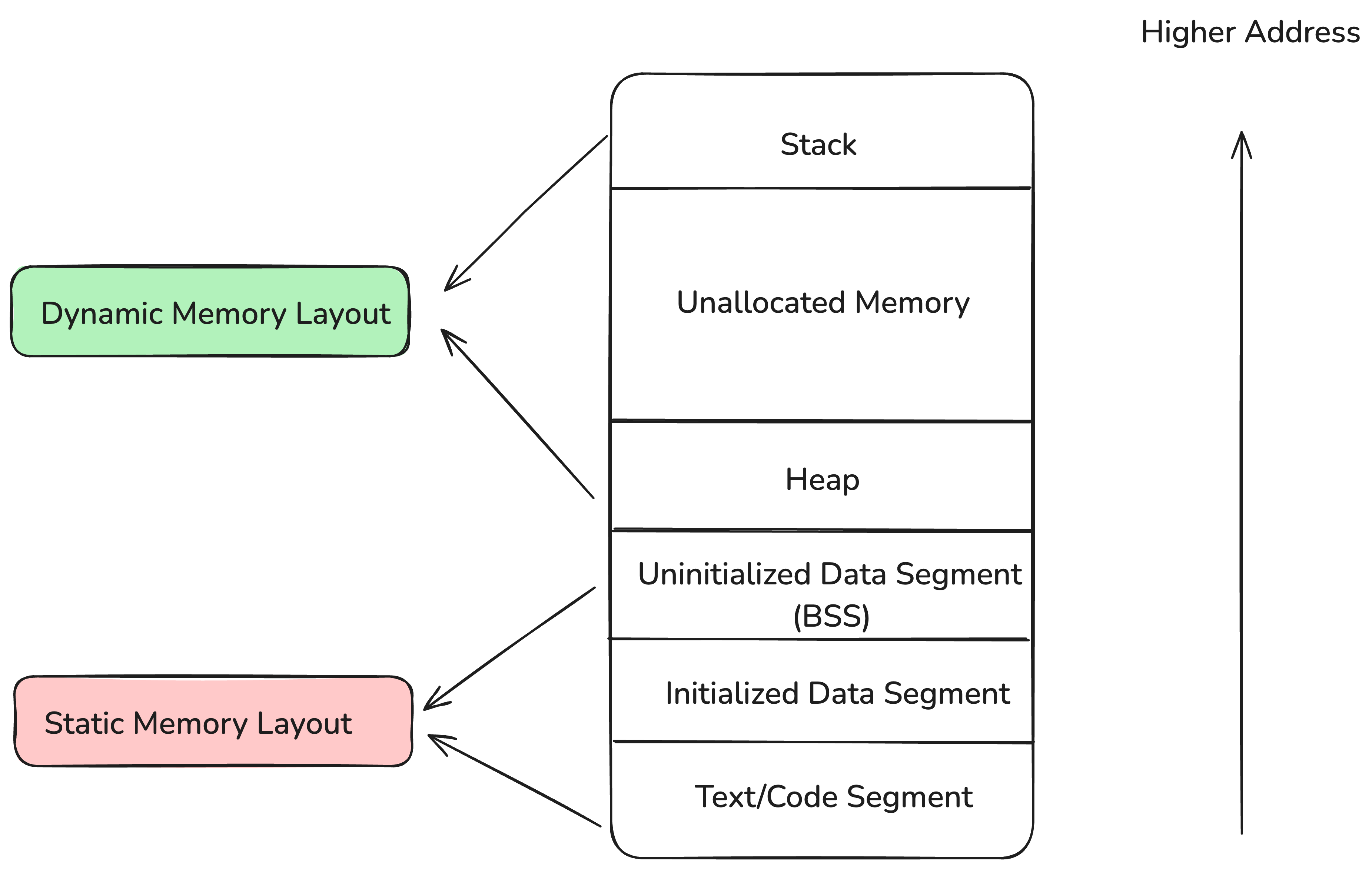Memory Layout in C/C++
Memory layout of a process.
1. Process vs Program
When we talk about memory layout, we are referring to a process, not a program. So, what is the difference between these two?
| Term | Description |
|---|---|
| Program | A static entity — a file on disk (ELF, PE, Mach-O, etc.). It contains code, data, metadata, but no allocated memory yet. It contains all the needed information and data to describe how to construct a process at runtime. |
| Process | A dynamic instance of a program that is loaded into memory and being executed by the OS. It has an address space, threads, open file descriptors, etc. |
The memory layout essentially describes how the OS maps a program’s components(code, data, etc.) into a process’s virtual address space. The following diagram shows the full lifecycle of how a program creates a process with concrete memory layout.

| Step | Description |
|---|---|
| Step1 | Program files are stored as bytes, nothing is loaded into the memory yet. |
| Step2 | The OS creates virtual address space and maps the executable to different segments, as well as dynamic linker and shared libraries. |
| Step3 | Different segments are loaded into memory. |
| Step4 | main() is used as execution entry point. Stack grows downwards while Heap grows upwards. |
| Step5 | The process exits by calling either eixt() or returning from main(). Allocated memory is released. |
2. Memory Layout

Let’s discuss each segment from bottom to top.
Text/Code Segment
This segments contains the compiled machine instructions which are loaded from the .text section of the ELF/PE/Mach-O file. Text/Code segment has read-only permission to prevent accidental modification. If we try to write to text/code segment, you will get a Segmentation Fault.
Initialized Data Segment
This segments holds all external, global, static and const variables whose values are explicitly initialized at the time when they are defined. We can further classify these variable into two categories: read-write and read-only. Since const variables can not be changed, they fall under read-only section. The rest types belong to read-write section, which means they can be modified during the execution.
For example, all the variables will be stored in this segment.
1 | int a = 1; |
Uninitialized Data Segment (BSS)
An uninitialized data segment is also known as bss (block started by symbol). It stores global and static variables that are not initialized. Data in BSS will be set to be 0(or nullptr for pointer types) by default. Because the values of these variables can be modified, so this is a read-write area.
Heap
Heap is used for dynamic memory allocation such as malloc(), new, etc. It grows and shrinks in the opposite direction of Stack. This is a read-write area.
Stack
Stack stores a variety of data types including stack frame, local variables, arguments and return values. A stack frame is a block of memory on the stack that is allocated for each function call. Each time you call a function, a new stack frame is pushed onto the stack.
Stack grows downwards and is a read-write area. Stack has a fixed maximum size, exceeding its max capacity will lead to Stack Overflow. The maximum stack size is usually configurable. Here is a summary of default stack size on different OS.
Linux (x86_64) 8 MB
Linux (arm) 256 KB ~ 1 MB
macOS 8 MB
Windows 1 MB
POSIX Thread (Linux pthread_create) 8 MB
We can check the default Stack size on Linux/Mac using command:
1 | ulimit -s # show stack size in KB |
References
Memory Layout in C/C++
